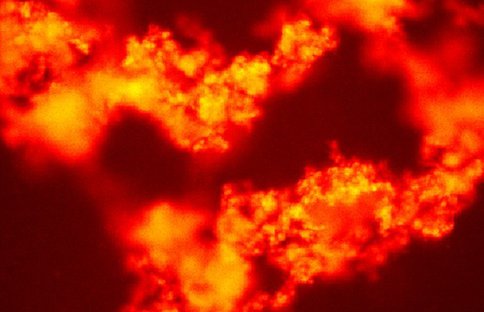2013 Annual Science Report
 VPL at University of Washington
Reporting | SEP 2012 – AUG 2013
VPL at University of Washington
Reporting | SEP 2012 – AUG 2013
Genetic Evolution and the Origin of Life
Project Summary
In this task biologists and chemists use field and laboratory work to better understand the environmental effects on growth rates for freshwater stromatolites and the mechanisms that govern their adaptation to their environment. Stromatolites are microbial mat communities that have the ability to calcify under certain conditions. They are believed to be an ancient form of life, that may have dominated the planet’s biosphere more than 2 billion years ago. Our work focuses on understanding these communities as a means of understanding environmental impacts on evolution, and characterizing their metabolisms and gas outputs, for use in planetary models of ancient environments. This year we also started a new project looking at the chemical affinities of the building blocks of life, as a way to understand how life might have initially formed from these chemical precursors.
Project Progress
VPL Team members made progress this year improving our understanding of environmental influences on horizontal gene transfer and the implications for microbial evolution and adaptation to environments on other worlds. Team members also initiated research on fundamental chemical affinities that may have assisted the origin of life.
Siefert continued long-term work at the Mexican field site, the Cuatro Ciénegas basin, in collaboration with Jim Elser and the Follow the Elements NAI Team, ASU. The scientific goal is to understand stromatolite formation in present conditions as a proxy for evaluating early Earth and extraterrestrial microbiological formations as biosignatures. We were on site during February, and again in May. The May trip involved an all-hands meeting with our Mexican collaborators and the planning of eight papers to come from our efforts there. In February we continued sampling and worked with the team that is handling the bioinformatics platform, so that all of the sequence data is in the same format and available through a web interface. The May meeting was held in Mexico City and was a brainstorming session for the papers, in an attempt to place all of the experimental data into a global context. We also beta-tested the bioinformatics web interface. (All papers are currently in progress, with two nearly ready for submission). Siefert also attended the Astrobiology Grand Tour in Western Australia which was instrumental in understanding the context, geology, and history of microbialites on early and current Earth. As an astrobiological application of her work on horizontal gene transfer at Cuatro Cienegas, Siefert explored the viability of microbial contamination of the Mars environment by microbes carried on manned and unmanned vehicles (Siefert, 2012).
At UW, Black and Keller performed laboratory studies that suggest that the joining of RNA and fatty acids to form the first cells may have been assisted by a natural chemical affinity between these components (Black et al., 2013). Their research showed that the four bases in RNA had a preferential affinity for decanoic acid, which was likely a key component of prebiotic vesicles. In turn, the RNA bases bonded to decanoic acid vesicles protected the vesicles from aggregation in salty solutions, providing mutually reinforcing mechanisms that could have driven the emergence of primitive cells.
Publications
-
Black, R. A., Blosser, M. C., Stottrup, B. L., Tavakley, R., Deamer, D. W., & Keller, S. L. (2013). Nucleobases bind to and stabilize aggregates of a prebiotic amphiphile, providing a viable mechanism for the emergence of protocells. Proceedings of the National Academy of Sciences, 110(33), 13272–13276. doi:10.1073/pnas.1300963110
-
Siefert, J. L. (2012). Man and his spaceships. Mobile Genetic Elements, 2(6), 272–278. doi:10.4161/mge.23238
-
PROJECT INVESTIGATORS:
-
PROJECT MEMBERS:
Roy Black
Project Investigator
Sarah Keller
Co-Investigator
Robert Blankenship
Collaborator
Eric Boyd
Collaborator
-
RELATED OBJECTIVES:
Objective 3.2
Origins and evolution of functional biomolecules
Objective 3.4
Origins of cellularity and protobiological systems
Objective 4.1
Earth's early biosphere.
Objective 4.2
Production of complex life.
Objective 5.2
Co-evolution of microbial communities
Objective 5.3
Biochemical adaptation to extreme environments
Objective 6.1
Effects of environmental changes on microbial ecosystems
Objective 6.2
Adaptation and evolution of life beyond Earth

